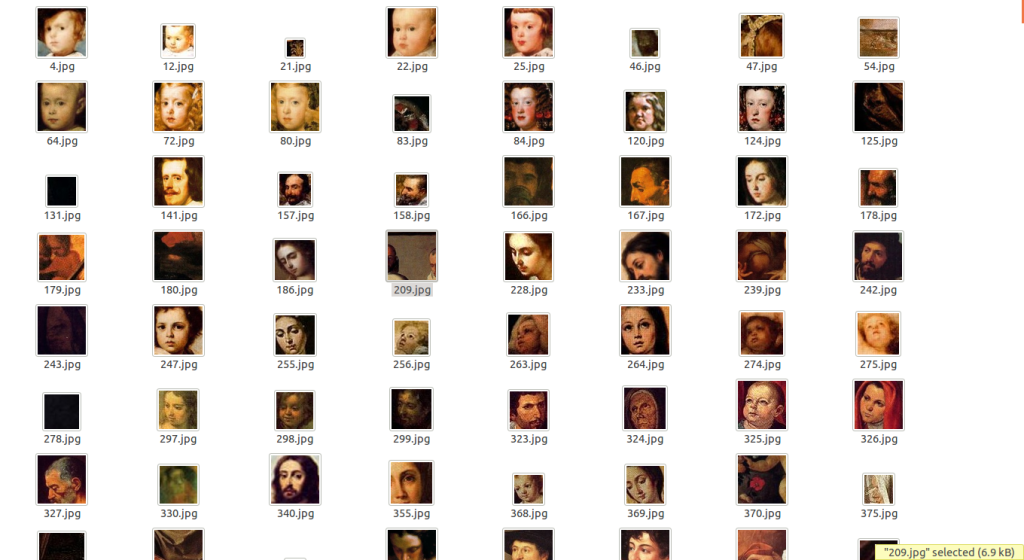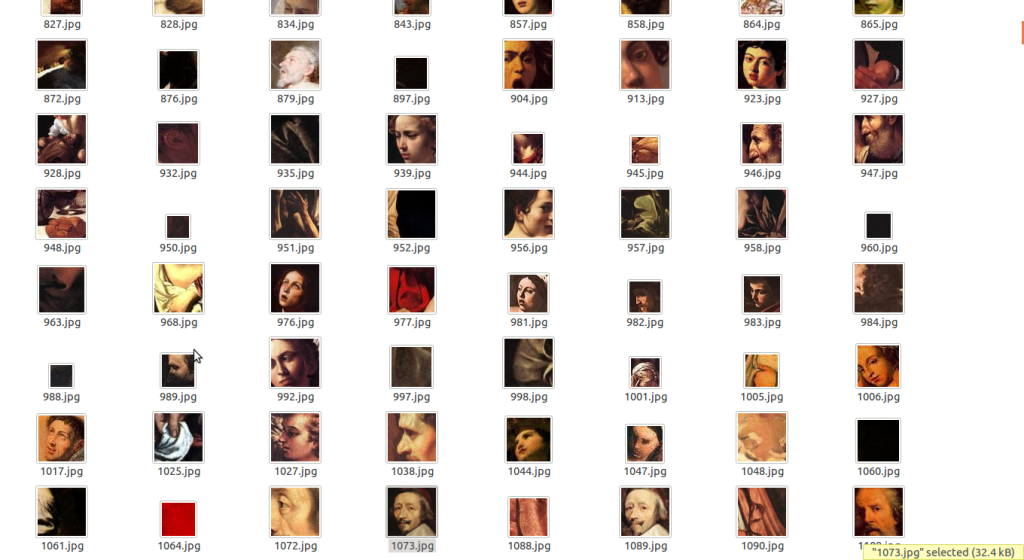One of the most important ideas in object recognition, particularly faces recognition, became with the work of Viola and Jones [1]. This work is based in the algorithm of Adaboost [2]. The idea is use very simple features of the faces that can be calculated very fast. Then select the best ones testing against a previously set of faces. In general, a feature is any value we can extract from a digital image. For example, a simple value of a pixel could be a feature. It is also possible to use more sophisticated stuff like histograms of colors or edges. In the case of Viola and Jones they use a very simple way of play with pixels. Just as an example, a feature could be the substraction of the area (sum of pixels) of one region of the image to another region of the image.
So, as part of the course Interactive Exhibit Design we decided to use this. Then I processed a lot of old baroque paintings and extract the faces. Even though the results are not perfect, I obtained decent results. I have a whole folder of faces and these are two sections of it. the first is a good section of the folder and the second a not-so-good section. I hope to do something interesting with all of this.
[1] Rapid object detection using a boosted cascade of simple features
[2] A decision-theoretic generalization of on-line learning and an application to boosting


